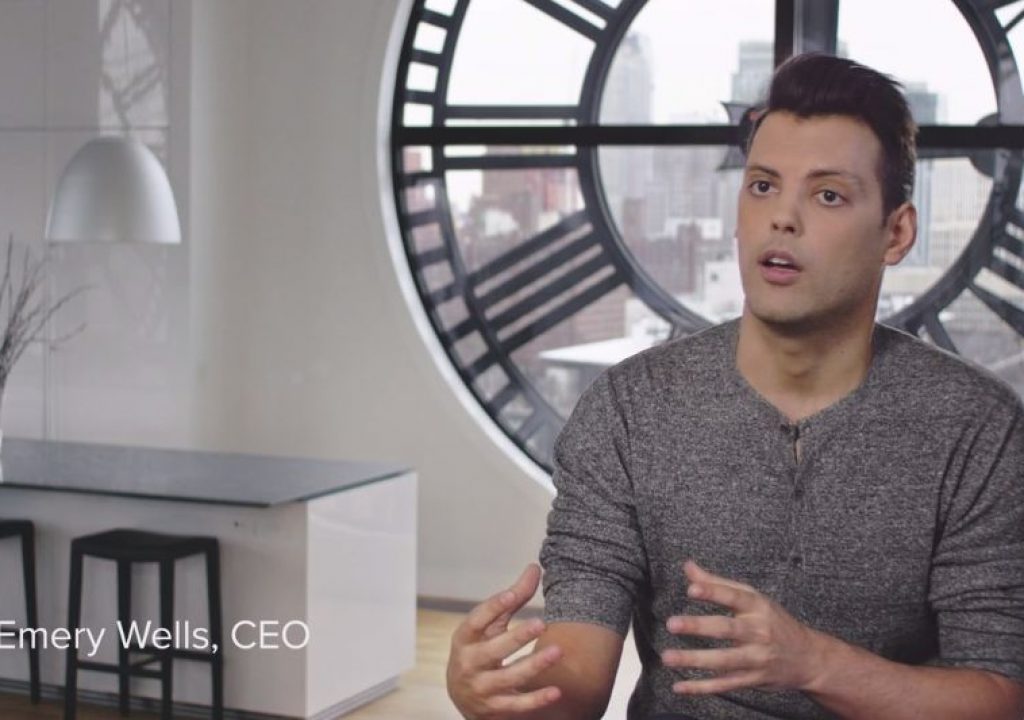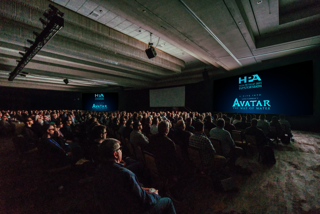There are a plethora of review and approval options for video pros out there, but the folks behind Frame.io are positioning their tool as something different. Initially developed as an internal tool for the creator’s post-production company, Frame.io expanded to become something much more.
Starting today, creative teams can begin using a free version of Frame.io and can easily scale to any number of projects or collaborators with affordably priced monthly packages. Their goal is to help creatives finish their project faster, smoother, and more efficiently.
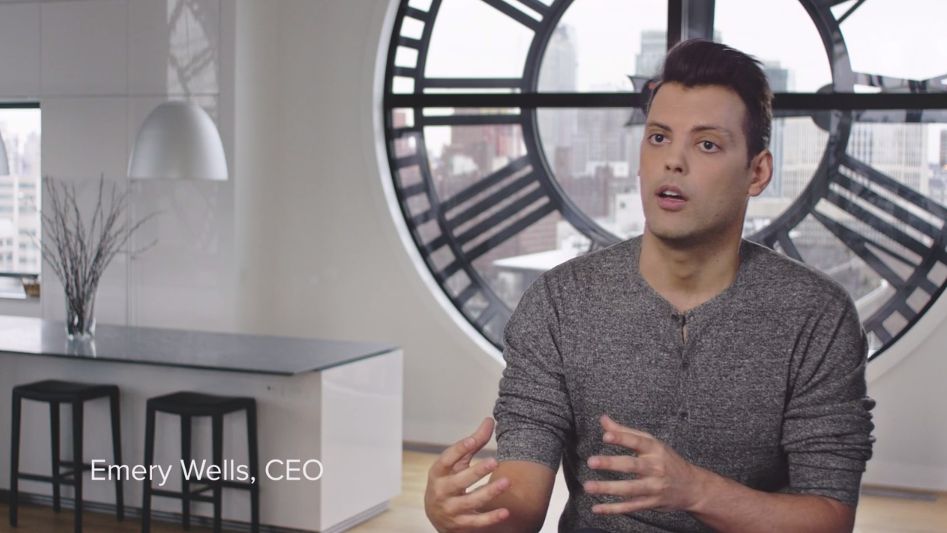 Emery Wells is the co-founder/CEO at Frame.io, and we wanted to talk to him about what makes his product different from other video review and approval options that are currently available. We discuss why his perspective around the creative process is so significant, how people have been using this tool, how these platforms are going to continue to evolve and plenty more.
Emery Wells is the co-founder/CEO at Frame.io, and we wanted to talk to him about what makes his product different from other video review and approval options that are currently available. We discuss why his perspective around the creative process is so significant, how people have been using this tool, how these platforms are going to continue to evolve and plenty more.
ProVideo Coalition: Frame.io is designed to replace the multiple programs people use for file sharing, video review, and communication on creative projects. What sort of issues arise when professionals have to use so many different platforms?
Emery Wells: It’s really just impossible to keep track of.
The genesis for our project was when we started building Frame.io as an internal tool at my post-production company, because we were faced with that exact problem. On any given project we would have three, four, five, etc. different services that we were using just to communicate and get the job done. We might use Dropbox for file sharing, Vimeo with passwords for video review and email for communication, but the issue wasn’t just the multitude of services we were using, it was what our vendors and clients were using. They might be using something different, and we would often get Yousendit links and Hightail links and Youtube links or FTP details, and trying to keep all of that straight when you’re working on five or six different jobs was incredibly challenging. It became an ordeal just to keep track of everything.
Not only that, but for any creative project there are a lot of iterations, versions, assets and plenty more, so there are a lot of things flying all over the place. What often happens then is that communication breaks down, because communicating about specific creative intent can be challenging on its own, but if you’re not in the same room you’re already dealing with another layer of complication. When this happens, you wind up getting these emails with time-code notes but the time-code never really matches the video in the place they’re referencing, so it’s kind of chaotic and you spend your time trying to keep track of systems rather than the actual project.
What’s more important for you? Changing the way people think about their process or about making things simpler for them?
It’s both.
One of the big differentiating factors between what we’re doing and what some other people are doing is that so many others are trying to solve a single aspect of the problem. They’re trying to solve work-in-progress review, or cloud dailies, or how to distribute source media assets to a team that’s located around the world. There are some companies that only focus only on video, but as video people we still need to use still assets, audio files and even text documents.
I think the power of Frame.io is that we’re tackling the whole problem. I mean, we’re always going to have email, but you really don’t have to use anything else. We’ve put it into a package that’s incredibly simple and kind of fun to use. This is a utility, so we’re not making Angry Birds, but it takes all the pain and frustration of collaborating and makes it easy and enjoyable.
How significant is it that you’re approaching collaboration logistics from a creator’s perspective?
I certainly think it sets us apart. This system was built from the users perspective because we are the user.
My previous post-production company created all sorts of high-end advertising and I’ve done the color-grading for over 100 digital shorts for Saturday Night Live, so we’ve lived in the trenches and have worn all the hats. We’ve been editors, VFX artists, producers, writers, directors and DPs. We’ve done it all, so we’re not coming at it from an angle of, “we think this would be useful for this community of people that we have a tangential relationship with.” We’re building it for us.
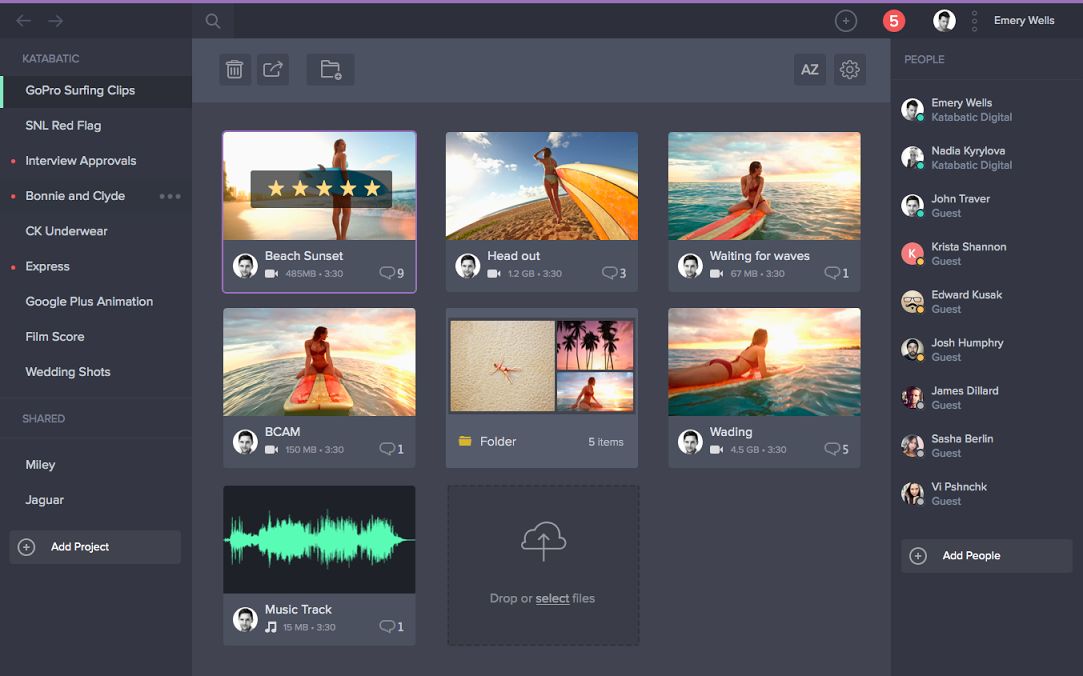
How many different types of customers are you working with in beta?
In the private beta we’ve had over 150 companies and they’ve really run the gamut.
We’ve had small boutique post-production companies and we’ve had some of the biggest companies in the world. Facebook is one of the companies that have been on the private beta. Their marketing team has been using it for all the marketing content that they create at Facebook. Nice Shoes, which is an extremely well respected post-production and creative studio here in New York City, is using it to collaborate with their extended group of artists that are in Europe.
Then we’ve had companies like Birchbox, which is a company of a few hundred people. They sell these boxes of makeup, so if you subscribe you get a box of makeup, and they have many hundreds of thousands of subscribers that get these boxes on a monthly basis. But they’re creating all of this content every month to share with their audience about what’s coming up in the box, creating makeup tutorials, etc. It’s really a wide range of people.
The media & entertainment industry is our primary target, but there’s lots of use cases for people that are not necessarily in the creative industry like the companies I mentioned, but it goes even further than that. We have some people that are in education. Yale University was one of the organizations on the beta, and they’re using it in a classroom environment.
Why is this tool relevant to so many different organizations/companies that are working in very different environments and have very different goals around what they want to do with their content?
When you think about it, you still go through the same process to create content, regardless of what that content is or what it’s ultimately going to be used for. Marketing teams need to be able to effectively communicate with each other and have to deal with different versions and challenges around seeing a concept actually realized, so it’s really all the same problem.
Coming into this, we had the assumption that it doesn’t really matter what you’re doing, because we all have the same problems. And it turned out to be true. Whether you’re an individual event videographer and perhaps only work with one or two people or you’re a Hollywood movie studio, the core set of problems are exactly the same.
What are some of the really different ways people are using the product?
The primary use case with the group we’ve been working with has been the work-in-progress review. There are companies that are using it for cloud dailies and for sending large files. And that’s one of the things that differentiate us.
With Frame.io, you can upload any file. You don’t have to pre-compress anything, and it doesn’t have to be in any special format. It can be any video, photo, document…whatever. We compress it on the server side for playback and preview on the web, but we store the original for download. So a lot of people are using it to share full quality assets, from a shoot for example, to allow them to participate in an efficient work-in-progress review. Then they have a version that allows them to get and give feedback as necessary, but also have easy access to the assets if and when they’re needed.
How do you envision this tool will affect the way projects develop and come together?
One of the biggest things is that it removes the limitations of who you can work with. A lot of people are working remotely, but that usually requires you to have a previous working relationship or some trust that you’ve formed after working in-person. But even then it can be very difficult.
With Frame.io, we’ve really torn down logistical barriers. If you’re in a smaller market, somewhere outside of New York or Los Angeles for example, this platform will allow you to effectively communicate and deliver projects.
It’s going to be ideal for people on both sides of a project. It can open up a whole new client base to talent in smaller markets, while it also means that clients aren’t limited to their specific region, and instead they can find the most talented people in the world.
It’s a great thing because even when I’m searching for someone creative and locate some amazing work, it’s very rare that that person happens to be living in New York, and we’re obviously a huge market. Just being able to work with whoever you want, wherever they are without having to worry about the logistics is a pretty big deal.
What sort of a learning curve is there?
It’s very intuitive. Within a few minutes you feel right at home. We’ve designed it to feel familiar, and much of it is based on tools people are already using. When you look at the interface you immediately know what’s going on, and when people sign up we have a three-minute tutorial that they can watch which explains the entire prooduct. So it’s very easy to onboard.
It’s a web-based app, so you access it through a browser, but it was really designed to feel more like a desktop app. All of the things you would normally do on a desktop app, like drag and drop, will work in the browser.
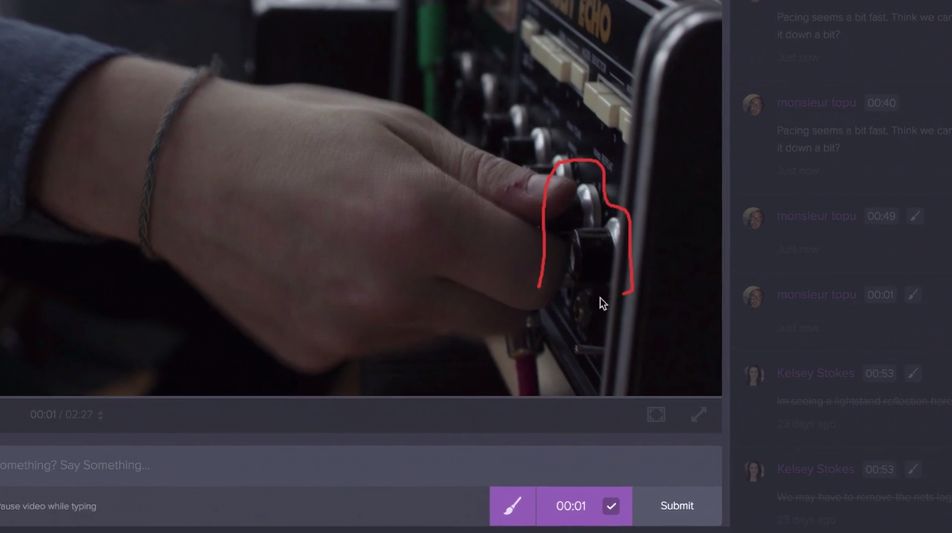
How do you see project management tools continuing to evolve in 2015 and beyond?
I think we’re just at the very beginning of this type of tool. One insane statistic is that less than 1% of the world’s professional video content ever ends up online at all. So we’re just at the very beginning of moving people’s media into a cloud-based environment, which is the first step. Once we get it to somewhere central, then we can start to do interesting things with it.
As of right now, all of that content isn’t anywhere central because there hasn’t been a platform that makes sense to move source media into. Looking over the next few years, as the Internet speeds gets faster people are going to be more and more capable of moving stuff into the cloud, so we’ll see a lot more of that.
For us though, we built Frame.io as a platform, so we have a core set of collaboration tools and things you can do right now, but we can really take it anywhere. So we’re going to start exploring building in some actual creative tools, and we’re going to start focusing on integrating with the creative apps that people are already using. Eventually, we want users to be able to be cutting in Final Cut or Premiere, and then have those materials flow back between those apps and Frame.io.
The way professionals of all types and sizes approach how their projects come together will continue to grow and evolve.
What sort of an impact can tools like this make the bottom line?
So many companies make a large amount of their revenue due to inefficiencies. Many companies are wasting a huge amount of money because the way in which they communicate is very inefficient, which leads to further and unnecessary investments. So there’s a lot of money to be saved there.
But even on the vendor side and on the post-production side of things, which is what I’m familiar with, so much of the work and time you spend on something isn’t billable. Setting up different formats and versions for multiple people who need to provide feedback, for example. Tools like this allow you to get a good chunk of your day back that you weren’t able to bill for anyway.
At my post-production company, on any single project, whenever we are sharing a work-in-progress with a client, it’s not uncommon to post something in three, for, five…ten different formats. There were all these different people that were on all these different platforms that needed to see it at different codecs and different resolutions.
With Frame.io all of that goes away, because you can upload anything and it’s going to playback seamlessly on every single device in the same way that it would look on Youtube or Vimeo. The professionally solutions that were tailored to our market didn’t have that, so we would be manually compressing in many different formats and posting them all individually and distributing all these different links to different people, and that all just goes away.
Even when people recognize that change is both necessary and positive, it can still be difficult to implement. Regardless of whether or not someone is looking to make that change, what kind of a difference have you seen effective project management tools and processes have on a project?
There are some people that already feel the pain of how they’re working right now, so they see Frame.io as a savior and they’re ready to make a change right now because they’ve had so many issues. Then there are other people who have accepted the pain, and they’re just sort of numb to it. They experience it, but it’s not conscious. It takes just a little taste of how you can work so much more efficiently to see they’ve been living in pain for so long.
I certainly think there will be some education that’s required, and we’ll also need some cheerleaders who can tell everyone that things don’t have to work in the inefficient way they’ve always worked, and there are tools that can really help.
Ultimately, it’s just about making people lives easier. We certainly do get some feedback from people who are unsure about whether or not their client is going to use something, and it does take that initial step of investment and commitment because you know it’s going to save you time and money.

Filmtools
Filmmakers go-to destination for pre-production, production & post production equipment!
Shop Now